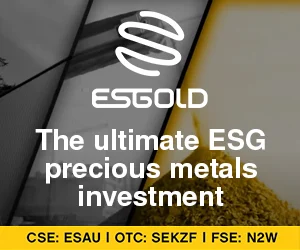On Thursday, gold prices exhibited remarkable stability as investors closely monitored the escalating conflict between Iran and Israel. Meanwhile, platinum prices surged to heights not seen since September 2014, reflecting a complex interplay of geopolitical and economic factors.
Current Gold Prices
As of 09:55 GMT, gold spot prices settled at $3,369 per ounce, while US gold futures experienced a slight decline of 0.6%, dropping to $3,387. This stability in gold prices comes at a time when global tensions are high, particularly following recent military actions in the Middle East.
Geopolitical Tensions: Iran and Israel
The situation intensified on Thursday when Iranian missiles struck an Israeli hospital, prompting Israel to retaliate by targeting critical sites within Iran. The conflict has drawn international attention, with US President Trump hinting at a potential military involvement, further complicating the geopolitical landscape. Such instability often drives investors toward gold, traditionally viewed as a safe haven during turbulent times.
The Federal Reserve’s Impact on Gold
The Federal Reserve’s recent decision to maintain interest rates has also played a significant role in the gold market. Despite a challenging economic outlook, the Fed anticipates a 0.5% rate cut later this year. Fed Chair Jerome Powell has expressed concerns about rising inflation, particularly due to tariffs, which could further influence gold prices. Low interest rates typically enhance gold’s appeal, as the opportunity cost of holding non-yielding assets diminishes.
Platinum Prices Reach New Heights
In contrast to gold, platinum prices have seen a remarkable surge, briefly hitting September 2014 highs before dipping 2.5% to settle at $1,288 per ounce. This spike can be attributed to several factors, including increased imports from China and ongoing supply concerns. As investors seek alternatives to gold, platinum has emerged as a viable option.
Supply Concerns and Demand Outlook
The demand outlook for platinum remains robust, bolstered by supply issues and rising mineral rental prices. The International Platinum Investment Council has projected a supply deficit of one million ounces for the year, further driving prices upward. Platinum’s applications in lab equipment and auto catalytic converters, combined with its status as an investment asset, contribute to its growing appeal.
Tariffs and Shipping Dynamics
Fears surrounding potential US tariffs have led to a surge in platinum shipments into the US, raising storage costs for the metal. Current one-month rental rates for platinum have increased by 13.5% year-over-year, reflecting the heightened demand and supply constraints.
Year-to-Date Performance
So far this year, platinum has outperformed gold, rising 32% compared to gold’s 26% increase. This performance underscores the shifting dynamics in the precious metals market, where investors are increasingly looking for opportunities amid fluctuating economic conditions.
Conclusion
As geopolitical tensions continue to shape the financial landscape, both gold and platinum prices are responding to a complex array of factors. While gold remains a steadfast safe haven, platinum’s recent surge highlights the evolving preferences of investors. With ongoing supply concerns and changing economic policies, the precious metals market is likely to remain dynamic in the coming months. Investors will need to stay vigilant, analyzing both geopolitical developments and economic indicators to navigate this intricate landscape effectively.




